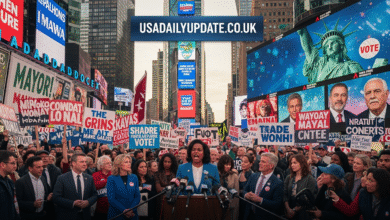Explosive OpenAI News Today: Revolutionary Updates Transforming AI

Introduction
The AI world is buzzing right now. OpenAI news today brings some of the most significant developments we’ve seen in the artificial intelligence industry.
From mind-blowing revenue projections to massive infrastructure deals, the company is making waves across multiple fronts. If you’ve been following the AI revolution, you know that OpenAI sits at the epicenter of this transformation.
What’s happening at OpenAI right now isn’t just company news. It’s a glimpse into how AI will reshape our economy, our jobs, and our daily lives. Let me walk you through everything that’s breaking today and why it matters to you.
OpenAI’s Revenue Growth Shatters Expectations
Sam Altman, OpenAI’s CEO, just dropped a bombshell about the company’s financial performance. During a recent podcast appearance, he revealed that OpenAI is generating “well more” than the reported $13 billion in annual revenue. That’s huge.
But here’s where it gets even more interesting. Altman hinted that the company could potentially hit $100 billion in revenue by 2027. Think about that for a second. We’re talking about explosive growth that would put OpenAI in the same league as some of the biggest tech giants.
The revenue story doesn’t stop there. You might wonder how a company can spend so much while still growing. While OpenAI continues raising tens of billions from investors and generating billions more in revenue, Altman has warned that losses will persist. Microsoft’s latest quarterly results included a $4 billion charge that implies OpenAI lost $12 billion last quarter.
This paints a complex picture. OpenAI is growing fast but spending even faster to stay ahead in the AI race.
Why This Revenue Growth Matters
When a company grows this quickly, it signals market validation. People aren’t just curious about ChatGPT anymore. They’re paying for it. Businesses are integrating it. Students are using it daily.
Altman emphasized that “revenue is growing steeply” and the company plans for this trend to continue, with ChatGPT expected to keep expanding alongside new ventures in AI cloud services and consumer devices.
The path forward includes multiple revenue streams. ChatGPT subscriptions represent just one piece. OpenAI is positioning itself as a major AI cloud provider. They’re developing consumer devices. They’re automating scientific research.
Each of these initiatives represents billions in potential revenue. And unlike some tech companies that chase growth at any cost, OpenAI is building something sustainable.
The Historic $38 Billion AWS Partnership
Now let’s talk about what might be the biggest OpenAI news today. OpenAI just announced a strategic multi-year partnership with Amazon Web Services valued at a staggering $38 billion, marking its first major collaboration with the world’s leading cloud infrastructure provider.
This deal completely reshapes the AI and cloud computing landscape. Think about what this means. For years, Microsoft has been OpenAI’s primary cloud partner. This AWS deal signals that OpenAI is diversifying its infrastructure strategy.
What The AWS Deal Includes
The seven-year agreement grants OpenAI immediate and expanding access to AWS’s cutting-edge infrastructure, specifically leveraging hundreds of thousands of NVIDIA graphics processing units (GPUs), including the highly anticipated GB200s and GB300s.
These aren’t just any GPUs. They’re the most powerful chips available for AI training. A significant portion of this capacity is expected to be deployed by the end of 2026, with further expansion options extending into 2027 and beyond.
The primary deployment will happen in the United States. OpenAI will utilize AWS’s Amazon EC2 UltraServers, which are engineered for high-performance AI processing, ensuring maximum efficiency and low-latency across interconnected systems.
Why does this matter to you? Because this infrastructure will power the next generation of AI models. The GPT models you use today will seem primitive compared to what’s coming. This computing power enables training on larger datasets, faster processing, and more sophisticated AI capabilities.

Michigan Gets America’s Largest Tech Investment
Here’s some OpenAI news today that’s creating thousands of jobs right now. OpenAI announced a new Stargate campus in Saline Township, Michigan, as part of its 4.5GW partnership with Oracle.
This isn’t just another data center. The multi-billion-dollar Stargate OpenAI facility will create 2,500 good-paying union construction jobs, more than 450 permanent high-skill, high-paying jobs on site, and 1,500 more in the community.
The Scale of Stargate Michigan
Let me put this in perspective. Combined with capacity from six previously announced U.S. Stargate sites with Oracle and SoftBank, this project brings Stargate to over 8 gigawatts of planned capacity and more than $450 billion in investment over the next three years.
That’s nearly half a trillion dollars in three years. We’re witnessing the largest private infrastructure investment in American history.
The Stargate Michigan campus is being developed by Related Digital, with construction expected to begin in early 2026, and will create more than 2,500 union construction jobs. These aren’t temporary gigs either. They’re high-paying positions that will support families and communities.
Environmental Considerations
You might worry about the environmental impact of such a massive facility. OpenAI thought about this. The site will use a closed-loop cooling system that significantly reduces water consumption.
DTE Energy will serve the campus using existing excess transmission capacity, avoiding impacts on local energy supply, and any upgrades required to support operations will be funded by the project and not local ratepayers.
This approach shows that you can build massive AI infrastructure while being responsible stewards of the environment. Local residents won’t see their energy bills spike. The water systems won’t be strained.
The Push Toward A Potential IPO
One of the most intriguing pieces of OpenAI news today involves the company’s future as a public entity. OpenAI is reportedly quietly preparing for a potential initial public offering that could value the company at up to $1 trillion.
Yes, you read that right. One trillion dollars. The IPO could become one of the largest in corporate history.
Timeline and Details
Sources indicate that OpenAI has begun internal groundwork to file with U.S. securities regulators as early as the second half of 2026, though the timeline could change depending on market conditions and the company’s financial performance.
Early discussions suggest the firm could aim to raise around $60 billion or more, with an eventual listing possible by late 2026 or early 2027.
Altman himself acknowledged the IPO possibility. When asked about going public, Altman said “I’m a realist, I assume it will happen someday” but denied having any specific date in mind.
Why An IPO Makes Sense
Think about OpenAI’s capital needs. They’re spending hundreds of billions on computing infrastructure. They’re hiring thousands of researchers and engineers. They’re building data centers across multiple continents.
Even after raising billions from Softbank, Nvidia, Microsoft and others, OpenAI still needs more money. An IPO provides access to public markets and potentially unlimited capital.
But there’s a catch. The company is losing a ton of money right now. A report from The Information says OpenAI expects negative cash flow of around $8 billion this year.
Does this mean you should worry? Not necessarily. Many of today’s tech giants lost money for years before becoming profitable. Amazon famously operated at a loss for nearly two decades while building the infrastructure that now dominates e-commerce and cloud computing.
Microsoft Relationship Evolution
The relationship between Microsoft and OpenAI continues evolving. These two companies have one of tech’s most important partnerships. Microsoft invested billions in OpenAI. They integrated ChatGPT into Bing and Office.
But as OpenAI grows, the dynamic is shifting. Microsoft CEO Satya Nadella, who appeared alongside Altman on a recent podcast, said OpenAI has exceeded all the business plans that he has seen, noting that “the business execution has been just pretty unbelievable”.
The AWS deal shows OpenAI is reducing its dependence on any single cloud provider. This makes business sense. You don’t want all your infrastructure eggs in one basket, especially when you’re building something as critical as advanced AI.
What This Means For You
All this OpenAI news today might seem distant from your daily life. But it’s not. These developments will impact you in concrete ways.
First, the technology you use is about to get dramatically better. That $38 billion AWS deal and the Stargate data centers provide the computing power for next-generation AI models. Expect ChatGPT and similar tools to become more capable, faster, and more useful.
Second, the job market is transforming. Yes, AI might automate some tasks. But look at Michigan. Thousands of high-paying jobs are being created right now. AI infrastructure needs builders, operators, and maintainers.
Third, the economy is shifting. When companies invest $450 billion in three years, that money creates ripple effects. Construction companies get contracts. Equipment manufacturers sell products. Local businesses serve new workers.
Preparing For The AI Future
You can prepare yourself for these changes. Learn how AI tools work. Experiment with ChatGPT and similar platforms. Understand their strengths and limitations.
If you’re in tech, follow the infrastructure side. Cloud computing, data centers, and AI operations offer tremendous career opportunities. The Stargate project alone needs thousands of skilled workers.
If you’re not in tech, think about how AI impacts your industry. Healthcare, education, manufacturing, logistics, every sector is being transformed. Understanding AI gives you a competitive advantage.
OpenAI’s Broader Strategic Vision
Beyond today’s specific news, we can see OpenAI’s larger strategy taking shape. They’re not just building better language models. They’re constructing a comprehensive AI ecosystem.
Altman outlined this vision, saying they expect “not only will ChatGPT keep growing, but we will be able to become one of the important AI clouds, that our consumer device business will be a significant and important thing, that AI can automate science and will create huge value”.
This is ambitious. Most companies would be happy dominating one vertical. OpenAI wants to be a major player in cloud services, consumer hardware, scientific automation, and more.
The AI Cloud Services Play
The AI cloud strategy makes particular sense. Right now, if you want to run advanced AI models, you need massive computing resources. Most companies can’t afford to build this infrastructure themselves.
OpenAI can become the provider of choice. They have the models. They’re building the data centers. They have the relationships with chip manufacturers. It’s a vertical integration play that could be worth hundreds of billions.
Consumer Device Ambitions
The consumer device business is intriguing but less defined. What might an OpenAI device look like? Maybe it’s a hardware product with integrated AI capabilities. Maybe it’s something we haven’t imagined yet.
Whatever form it takes, OpenAI clearly sees opportunities beyond software. They want AI to be tangible, not just something you access through a browser.
The Competition Heats Up
All this OpenAI news today happens against a backdrop of intense competition. Google has Gemini. Anthropic has Claude. Meta is pushing forward with Llama models. Microsoft is integrating AI everywhere.
The stakes couldn’t be higher. Whoever dominates AI infrastructure and capabilities will shape how billions of people work, learn, and create.
Other AI hyperscalers like Amazon, Alphabet, Meta, and top OpenAI investor Microsoft are collectively spending hundreds of billions of dollars a year in capital expenditures. This is an arms race, and everyone is going all in.
Challenges and Risks
We should acknowledge the challenges. Altman acknowledged that OpenAI is taking a risk and could stumble, noting that if it doesn’t obtain enough computing capacity then revenue may fall short of forecasts.
The computing capacity issue is real. Even with massive investments, there’s a global shortage of advanced AI chips. NVIDIA can’t manufacture them fast enough to meet demand.
There are also questions about whether AI capabilities will continue improving at the current pace. Some researchers worry we’re hitting diminishing returns. Others believe we’re just getting started.
The financial losses are significant too. Spending $12 billion in losses per quarter isn’t sustainable forever. At some point, OpenAI needs a path to profitability.
Addressing The Critics
Altman seems unfazed by skeptics. He added that one of the rare instances when being a publicly traded company would be appealing is when there’s an opportunity for short-sellers to lose big.
Altman said that although there are “not many times” when he wants OpenAI to be a public company, “One of the rare times it’s appealing is when those people are writing these ridiculous ‘OpenAI is about to go out of business’ posts, I would love to tell them they could just short the stock, and I would love to see them get burned on that”.
This confidence comes from seeing the trajectory firsthand. When you’re inside OpenAI, you see the usage numbers, the enterprise adoption, and the technical progress. From that vantage point, the future looks bright.
Regional Economic Impact
The Stargate Michigan project exemplifies how AI infrastructure investments can transform regional economies. Michigan isn’t Silicon Valley. It’s not a traditional tech hub.
Yet OpenAI stated that Michigan has long been at the center of American engineering and manufacturing, and they’re proud to build there and continue expanding the infrastructure needed to ensure the benefits of AI reach everyone.
This geographic diversification matters. When tech investments concentrate in a few coastal cities, inequality increases. Spreading AI infrastructure across America creates opportunities in places that need them.
OpenAI’s expansion into Michigan builds on sites already announced in Texas, New Mexico, Wisconsin, and Ohio, each of which will help strengthen local economies and advance America’s leadership in AI.
The Reindustrialization Opportunity
OpenAI views the infrastructure and manufacturing needed to advance AI as “a real chance to reindustrialize the country”. This framing is important.
For decades, American manufacturing declined. Jobs moved overseas. Communities suffered. AI infrastructure offers a chance to reverse some of these trends.
Building and operating massive data centers requires skilled workers. Installing cooling systems, maintaining servers, managing power systems. These are good middle-class jobs that can’t be outsourced.
Safety and Governance Considerations
With all this growth and investment, questions about AI safety become more pressing. OpenAI has released several safety initiatives recently. They’ve developed models for content moderation and safety classification.
The company is trying to balance moving fast with moving responsibly. It’s not an easy balance. Move too slowly, and competitors pull ahead. Move too fast, and you might deploy systems that cause harm.
OpenAI’s approach involves transparency, research publication, and collaboration with external experts. They’ve committed to having independent panels verify any claims about achieving artificial general intelligence.
These governance mechanisms matter. When you’re building systems that might eventually match or exceed human intelligence, having guardrails is crucial.
The Global AI Race
Today’s OpenAI news must be understood in a global context. China is investing heavily in AI. The European Union is establishing AI regulations. Countries worldwide recognize AI as strategically important.
America’s position in this race isn’t guaranteed. It requires continued investment, smart policy, and companies willing to take risks. OpenAI’s massive infrastructure buildout helps maintain U.S. leadership.
But leadership isn’t just about having the most powerful models. It’s about ensuring AI benefits society broadly. It’s about creating jobs and opportunities. It’s about doing this responsibly.
The $450 billion Stargate investment across multiple states shows commitment to American AI leadership. These aren’t just data centers. They’re statements about the future.
Looking Ahead
As we digest all this OpenAI news today, let’s consider what comes next. The next few years will be transformative. We’ll see new AI capabilities that seem like science fiction now.
We’ll see AI integrated into every aspect of business and daily life. We’ll see new jobs created and old ones transformed. We’ll see economic opportunities and challenges.
Your ability to navigate this future depends partly on staying informed. Understanding what companies like OpenAI are doing helps you make better decisions about your career, your investments, and your skills.
The AI revolution isn’t happening to you. You’re part of it. Whether you’re using ChatGPT for work, considering a job in tech, or simply trying to understand where the world is heading, these developments matter.
OpenAI stated that AI will unlock major benefits from better healthcare to improved public services, and the buildout required to get there will generate significant opportunities along the way.
This optimistic vision drives the company’s massive investments. Time will tell whether it’s justified. But one thing is clear. OpenAI is betting big on an AI-powered future. And they’re not the only ones.

Conclusion
The OpenAI news today reveals a company at a pivotal moment. Revenue is soaring. Infrastructure investments are breaking records. An IPO looms on the horizon.
From the $38 billion AWS partnership to the historic Michigan data center, from revenue projections hitting $100 billion to creating thousands of jobs across America, OpenAI is reshaping the technology landscape.
These developments will impact your life whether you work in tech or not. AI is becoming infrastructure. Like electricity or the internet, it will be everywhere, powering everything.
Stay informed about these changes. Explore AI tools and understand their capabilities. Think about how your industry and role might evolve. The future is being built right now, and you have a chance to be part of it.
What aspect of today’s OpenAI news interests you most? Are you excited about the technology advances, the job opportunities, or the broader economic implications? The conversation continues, and your perspective matters.
Frequently Asked Questions
What is the biggest OpenAI news today?
The biggest OpenAI news today includes the announcement of a $38 billion partnership with Amazon Web Services, which marks OpenAI’s first major collaboration with AWS. Additionally, OpenAI revealed plans for a massive data center in Michigan as part of the Stargate project, representing the largest investment in the state’s history. CEO Sam Altman also disclosed that the company’s revenue significantly exceeds the reported $13 billion annually.
How much money is OpenAI making right now?
Sam Altman stated that OpenAI is generating “well more” than the reported $13 billion in annual revenue. The company expects steep revenue growth continuing forward, with hints that it could potentially reach $100 billion by 2027. However, the company is also experiencing significant losses, with Microsoft reporting charges suggesting OpenAI lost approximately $12 billion in a recent quarter.
When will OpenAI go public?
While OpenAI is reportedly preparing for a potential IPO that could value the company at up to $1 trillion, no specific date has been set. Sources suggest the company might file with securities regulators in the second half of 2026, with a possible listing in late 2026 or early 2027. However, Altman has stated they don’t have a specific timeline and an IPO is not their current focus.
What is the OpenAI Stargate project in Michigan?
The Stargate Michigan project is a multi-billion-dollar data center campus in Saline Township being built by Oracle and Related Digital. It will provide more than a gigawatt of capacity for AI infrastructure and create 2,500 union construction jobs, 450 permanent on-site positions, and 1,500 additional community jobs. Construction is expected to begin in early 2026, and it represents the largest single investment in Michigan’s history.
Why did OpenAI partner with Amazon Web Services?
The $38 billion, seven-year partnership with AWS gives OpenAI access to hundreds of thousands of NVIDIA GPUs, including the advanced GB200s and GB300s. This computing capacity is critical for training next-generation AI models and scaling existing services. The deal also represents a strategic diversification, reducing OpenAI’s dependence on any single cloud provider while ensuring they have the massive computing resources needed for future AI development.
How many jobs will OpenAI create in Michigan?
The Michigan Stargate project will create over 2,500 good-paying union construction jobs during the building phase. Once operational, it will provide more than 450 permanent high-skill, high-paying jobs on-site, plus an additional 1,500 jobs throughout the surrounding community. Thousands more indirect jobs are expected across Michigan and the United States as a result of this project.
Is OpenAI profitable right now?
No, OpenAI is not currently profitable despite generating billions in revenue. Microsoft’s quarterly results suggested OpenAI lost approximately $12 billion in a recent quarter. The company expects negative cash flow of around $8 billion this year. However, Altman has emphasized that revenue is growing steeply and the company is making forward bets on continued growth across multiple business lines.
What is OpenAI’s revenue projection for 2027?
While not officially confirmed, Sam Altman hinted that OpenAI could potentially reach $100 billion in annual revenue by 2027. Previous reports suggested the company predicted hitting $100 billion by 2029, but the accelerated timeline suggests faster-than-expected growth. The company’s revenue is expected to reach about $20 billion by the end of 2025.
How will the AWS deal affect OpenAI’s relationship with Microsoft?
The AWS partnership represents a diversification of OpenAI’s cloud infrastructure strategy rather than a replacement of Microsoft. Microsoft remains a major investor and partner, with CEO Satya Nadella praising OpenAI’s business execution. The AWS deal allows OpenAI to reduce dependence on any single provider and access the massive computing capacity needed for future growth while maintaining its valuable Microsoft relationship.
What environmental measures is OpenAI taking with the Michigan data center?
The Stargate Michigan campus will use a closed-loop cooling system that significantly reduces water consumption compared to traditional data centers. DTE Energy will power the facility using existing excess transmission capacity, avoiding impacts on local energy supplies. Any required infrastructure upgrades will be funded by the project rather than local ratepayers. The project is designed to meet LEED certification standards and Michigan’s clean energy requirements.
Also Read Usadailyupdate.co.uk



